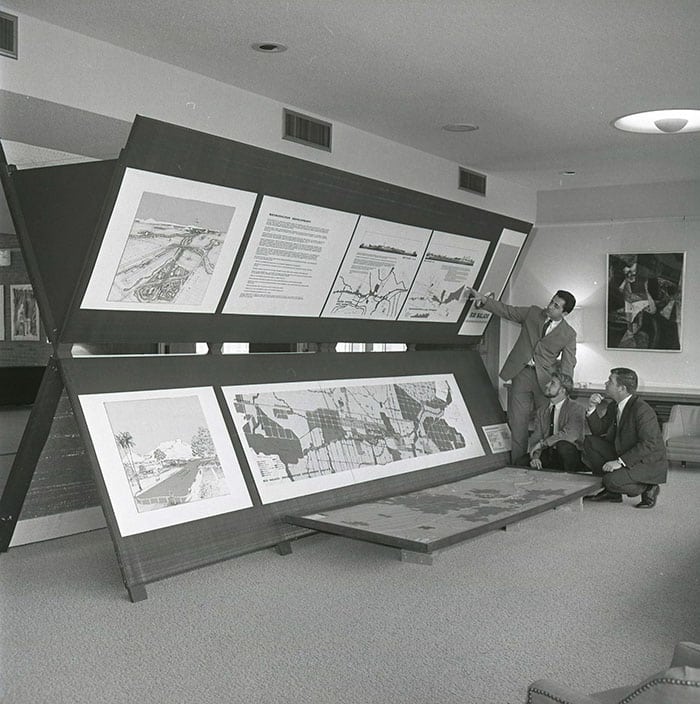In the Valley’s storied history of community and economic development, it’s unlikely there has been a project of this magnitude.
Six municipalities. Two Native American communities. Arizona State University. Salt River Project. Businesses and business organizations such as Valley Partnership. The U.S. Army Corps of Engineers. The U.S. Environmental Protection Agency. Maricopa County.
All of those entities are collaborating on the Rio Salado Project, a grand vision for civic identity – an iconic landmark for the Valley which fosters significant economic, recreational, and regional water management value of a long-ignored lifeline.
“This will be one of the most ambitious initiatives in the 31-year history of Valley Partnership,” says President and CEO Cheryl Lombard. “Based on our involvement in the Valley and our mission of responsible development to enhance quality of life and provide economic benefits, our partners are relishing our role in the long-term project.”
Arizona Sen. John McCain has provided the leadership to move this initiative forward. “The Rio Salado Project has the potential to transform the Salt River bottom and realize an untapped Valley treasure,” he says.
The project encompasses portions of the Salt and Gila rivers and confluence with the Agua Fria. Plans call for it to extend more than approximately 45 miles along the river’s corridor and up to a mile wide. It will span the cities of Buckeye, Goodyear, Avondale, Phoenix, Tempe, and Mesa plus the Gila River Indian Community and the Salt River Pima-Maricopa Indian Community within Maricopa County.
“What a fitting legacy to fulfill Sen. McCain’s vision to allow this incredible asset that we are lucky enough to have throughout all of our respective communities to come to life,” says Phoenix Mayor Greg Stanton. “We are taking that restoration to the next level – working with the federal government, regional partners, and ASU to tie all of our efforts along the river together.”
Rio reimagined: Why now?
In 1966, ASU dean James Elmore and his architecture students decided that something needed to be done about the large and barren dry bed of the Salt River. The students began working on design concepts to better utilize the vacant space.
The concept was basically to develop a series of channels in order to create an inland seaport. It incorporated a plan to create a linear greenbelt with buildings, recreational areas, and other developments along the river.
Fast forward to 2018. Initial project boundaries now extend approximately 58-plus miles long by one mile wide and encompass more than 78,000 acres extending from SR-85 to Granite Reef Dam. It is envisioned that the river corridor will integrate multiple objectives such as public open space, environmental and water quality, housing, transportation, economic development, workforce development, and community sustainability.
“When you look at the Rio Salado, it’s an expanse that runs through the Valley, multiple Indian communities, and entities that have jurisdiction or passion for the land that goes where the Rio Salado is concerned,” says Christine Mackay, community and economic development director for the City of Phoenix.
“It wouldn’t have made sense for one overarching entity to take the lead. ASU thoughtfully has over the past few months brought together the different municipalities, the Indian communities, Valley Partnership, and others. It really feels like a project that can happen,” Mackay adds.
Mackay says it is the largest project with multiple entities in which she has been involved. It will change the face of the Valley, she says. Mesa Mayor John Giles predicts the same for his city.
“The Salt River has shaped Mesa’s story from the time of the Hohokams to the founding pioneer families of the 1870s,” Giles says. “This is a unique opportunity to embrace our rich history and use it to shape our future. We applaud Senator John McCain’s leadership for pushing this project forward. We are excited to collaborate with our neighboring communities to fully utilize the potential of the Rio Salado.”
Adds Steve Chucri, chairman of the Maricopa County Board of Supervisors: “This is a project worthy of a world-class community, a proven catalyst for economic development, engineering innovation, and regional pride. The county looks forward to working with our regional partners to support this vision of the future.”
’The river connects us’
The tribal communities view themselves as the spiritual, cultural, and historical backbone to the Rio Salado Project.
“There is so much opportunity. We are all connected economically, socially, culturally geographically … a project such as this affords us the vision to mobilize the moral leadership to bring us all together for one vision on behalf of the community,” says Gov. Stephen Roe Lewis of the Gila River Indian Community.
For many decades, corporate, institutional and community leaders as well as allied elected officials and concerned stakeholders have been involved in exploring ways to reconnect the attributes of the Rio Salado to the residents of the Valley while maintaining flood protection and safety.

“The project has been relevant for decades,” says Buckeye Mayor Jackie Meck. “The conditions of the Gila River and our motives for restoring the river are much different than other sections of the proposed project. Buckeye’s interests are to prevent fire and flood, improve the wildlife habitat, and conserve water. Those are our motives in this project and we’re making progress slowly.
“Salt cedar trees have flattened out the channel creating flooding problems and their flammable chemistry compounds the threat to homes, farms, and critical infrastructure like our waste water treatment plant. Alleviating flood hazards would be a good start to the impact, but it’s hard to estimate what the economic impact will be although it can be nothing but positive,” Meck adds.
Says SRP President David Rousseau: “Sen. McCain’s vision to develop opportunities that enhance the economic vitality of the Rio Salado and its surrounding communities recalls the foresight of early Phoenix settlers who more than 100 years ago, banded together to support construction of the Roosevelt Dam and secured a prosperous future for the Salt River Valley.”
Rio reimagined: The future
A scar moving through the Valley and turning it into an international destination. That’s the description the City of Phoenix’s Mackay gives for what the Rio Salado Project could become.
The Del Rio Brownfields Area could be the first to get the Rio Salado Project off the ground. A gravel pit and landfill, it lies on the south bank of the river between 7th and 16th streets. “It’s a pretty cool land site,” Mackay gushes.

She foresees open spaces, parking, buildings, “and connectivity to the community. This is an area that needs a lot of attention it hasn’t had in decades.”
“Like many of you, I have traveled to every corner of this great state and found that cities with impressive features tend to attract many visitors,” says Cindy McCain, the senator’s wife. “The Grand Canyon – our most visited landmark – generates millions from tourism every year. The Sedona Red Rocks, Havasu Falls, and Monument Valley draw people from far and wide.
“Right here in the Valley, thousands head to Tempe Town Lake every weekend to enjoy everything from boating and kayaking to shopping and dining. I firmly believe we can continue the work that ASU started in the 60s to transform the remaining 40 miles along the Rio Salado and build a preeminent destination,” Cindy McCain says.
While the Rio Salado Project will benefit generations of Valley residents to come, its roots run deep.
“I grew up enjoying everything the Gila River had to offer – fishing, hiking, bird watching. It truly was a blessing,” Buckeye’s Meck says. “I learned a lot about life and to respect wildlife because I had those experiences.
“Today it hardly resembles a river. In some places it looks like a dumping ground. My interest is in restoring the river so future generations can enjoy it like I did, and in the process, I believe the river will bring tremendous opportunity to not only Buckeye, but to the entire Valley as well.”





